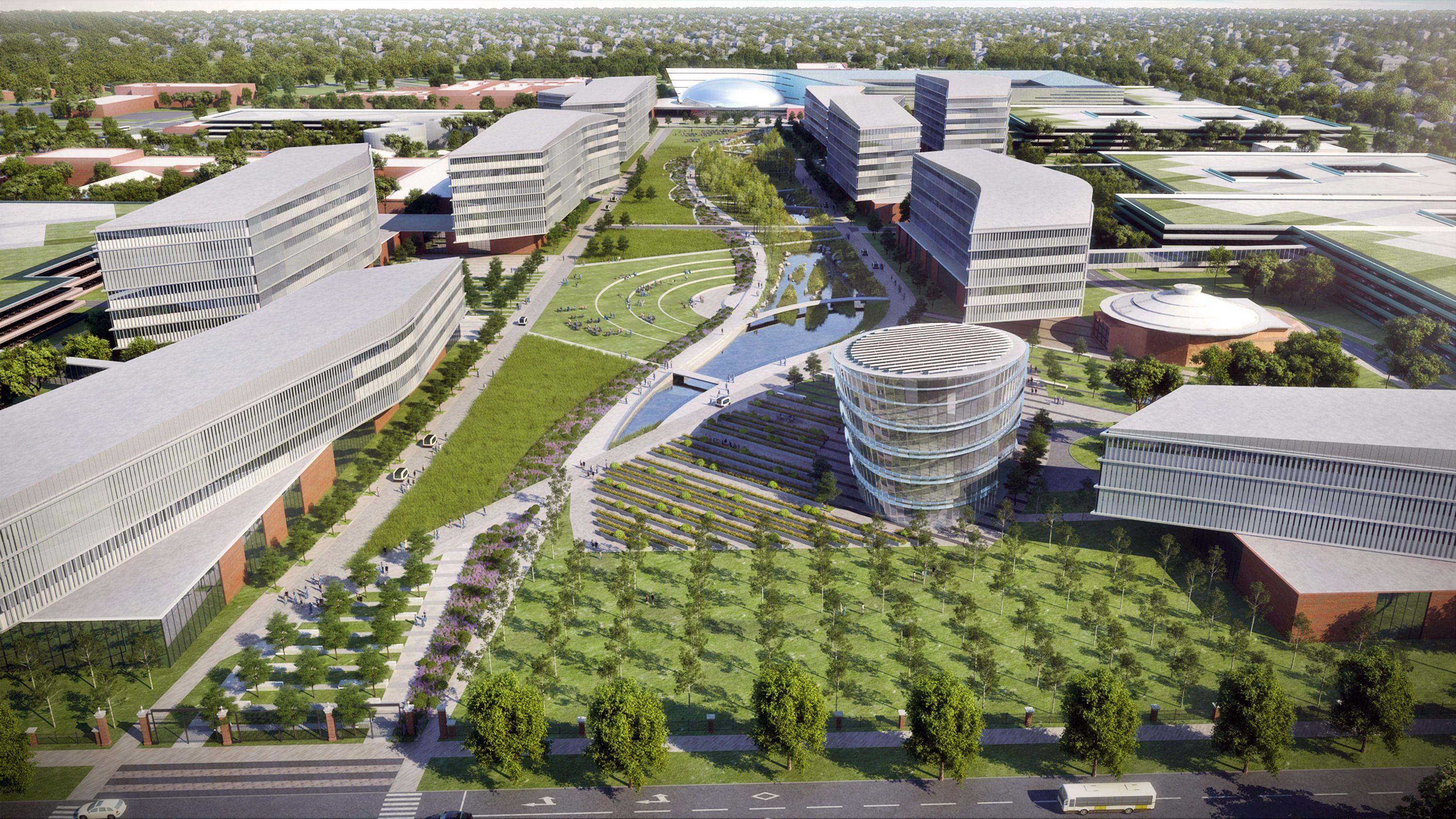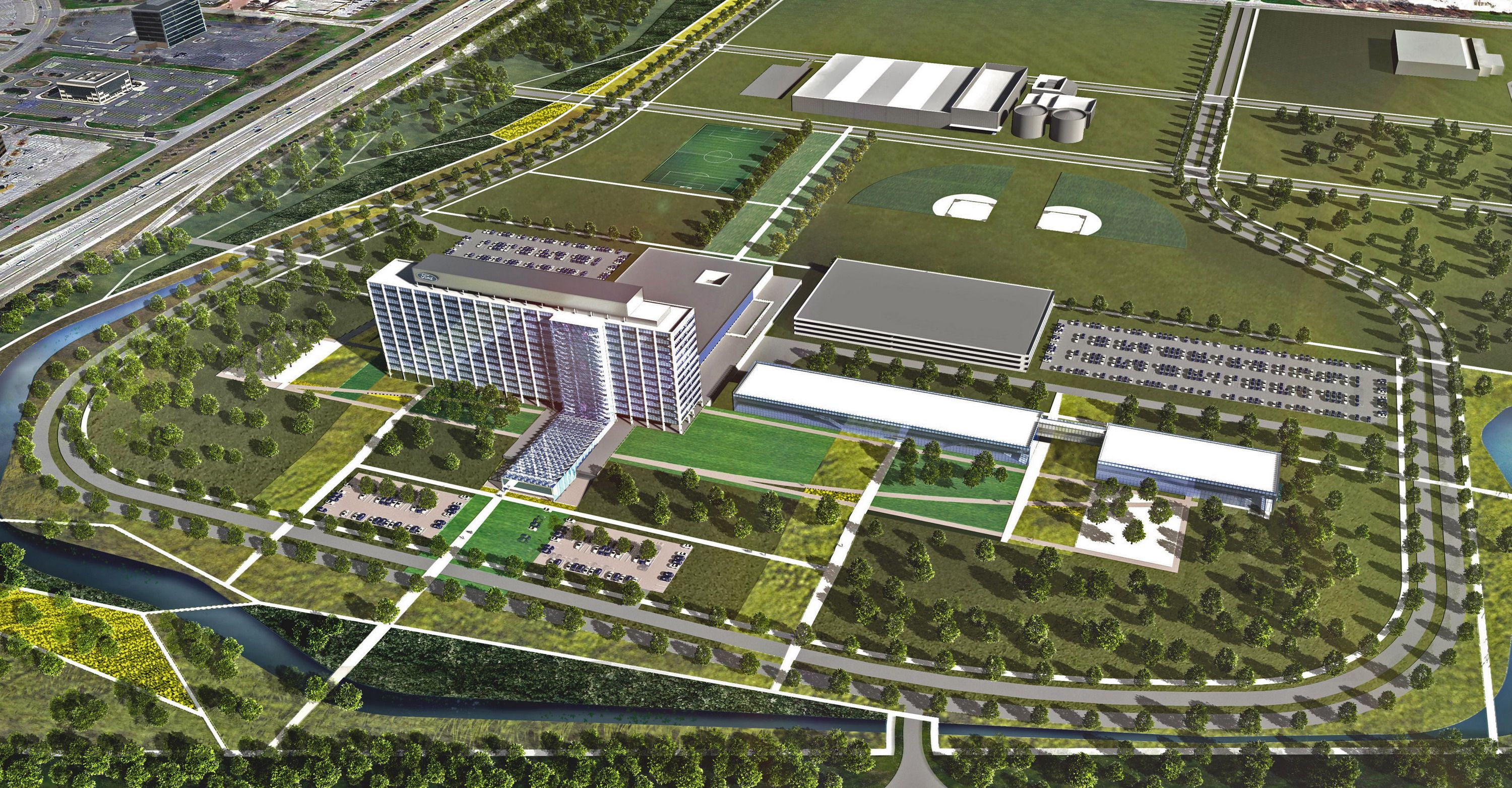Ford Motor Company->ke31 has announced plans for a complete revitalization of its Dearborn, Michigan facilities over a 10-year period. The plan include new buildings with better workflow layouts and high-tech connectivity upgrades, walking paths, roadways for autonomous->ke5282 shuttle vehicles and eBikes, and courtyards for employees to enjoy – all done with green energy building practices.
“As we transition to an auto and a mobility company, we’re investing in our people and the tools they use to deliver our vision,” said Ford President and CEO Mark Fields. “Bringing our teams together in an open, collaborative environment will make our employees’ lives better, speed decision-making and deliver results for both our core and emerging businesses.”
The transition to an auto and mobility company Fields talks about will have Ford not only building cars, trucks,->ke1311 SUVs,->ke145 and vans->ke1149 like today, but will expand into building autonomous vehicles and becoming a “leader in connectivity and mobility,” along with tapping into customer experience, data, and analytics.
Construction is set to begin by the end of April 2016 at the Ford Research and Engineering Center and should be done by 2023. Work on the Ford World Headquarters will begin in 2021 and is scheduled for completion in 2026. The two-phase project will deliver more than 1.3 million square feet of space.
Ford expects both locations will achieve at least a minimum silver certification through the U.S. Green Building Council’s Leadership in Energy & Environmental Design process. All newly constructed buildings are planned to meet LEED Gold certification, meaning they are environmentally constructed and use less energy than a conventional building.
All this is aimed at replacing Ford’s current facilities, which are more than 60 years old.
Continue reading for the full story.
Why it matters
There’s no doubt Ford is focused on the future – both in building vehicles and in creating cutting edge facilities from where its employees can work. Ford’s reasoning, as laid out in the press release below, is that happy employees work better and produce better ideas and products.
It’s easy to imagine Ford has long since outgrown its 60-year-old facilities. Currently employees are separated in smaller buildings that aren’t necessarily conducive to today’s connected and multi-tasking employee.
Though Ford is getting a fresh start with new buildings many of its more historical structures will remain and be updated for alternative uses. For example, the 14,000-square-foot Design Showroom will be converted into an event venue. Ford’s most iconic building, the World Headquarters building that was built in 1956, will be completely renovated and updated to match the rest of the campus’ upgrades.


